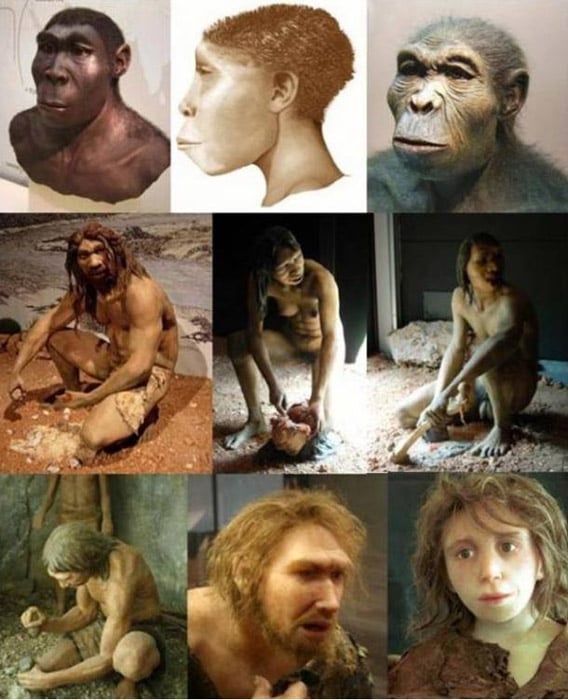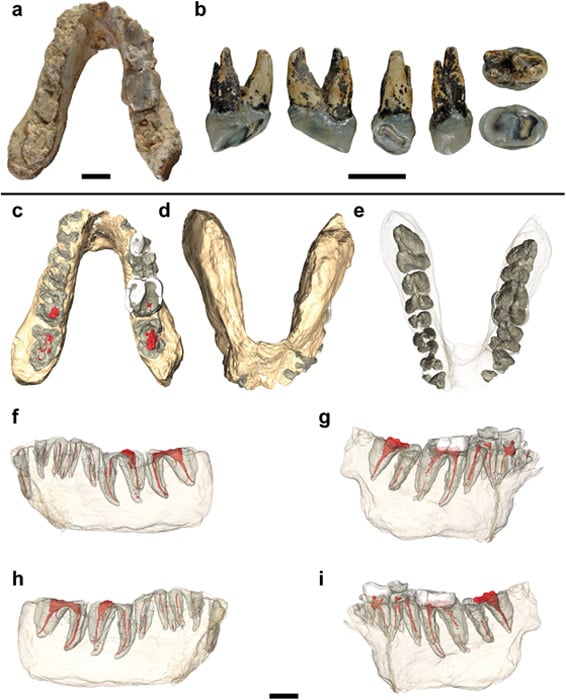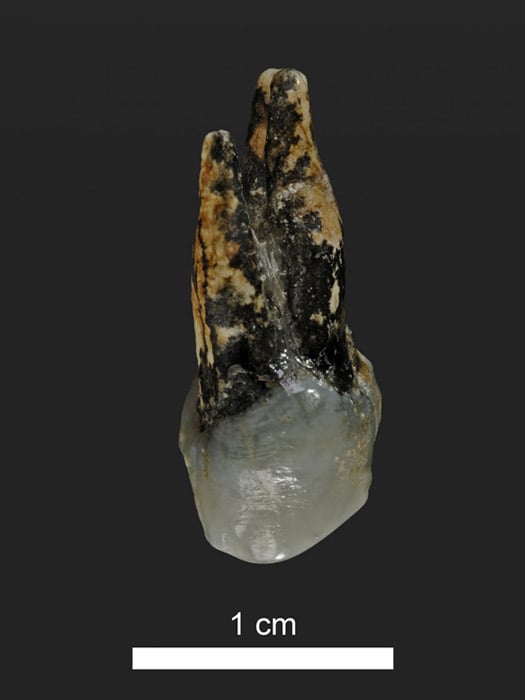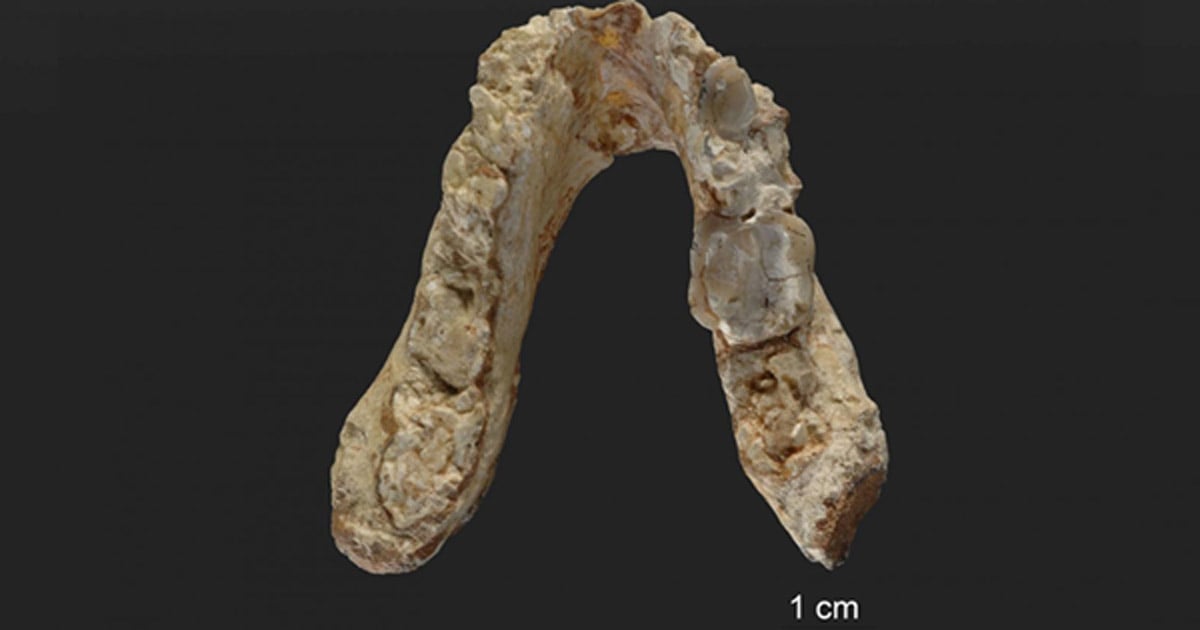7.2 million-Year-Old Pre-Human Fossil A Challenge to Out of Africa?
A new analysis of two 7.2 million-year-old fossils belonging to a hominin species nicknamed “El Graeco” from Mediterranean Europe, suggests that mankind emerged in Europe and not in Africa. The new study could reshape history, since it openly challenges the “out of Africa theory.”
The Out of Africa Theory in Serious Doubt
When an ancient, toothy lower jaw was discovered back in 1944 in Pyrgos Vassilissis, Greece, nobody really paid attention to the fossil as the casualties in Greece from World War II were so catastrophic that the extremely significant discovery was literally ignored by most anthropologists.

A mix of hominid (genus Homo) depictions; (from right to left) H. habilis, H. ergaster, H. erectus; H. antecessor - male, female, H. heidelbergensis; H. neanderthalensis - girl, male, H. sapiens sapiens. Public Domain
When it comes to modern human’s origins, the “Out of Africa” hypothesis has remained the dominant theory for decades, which suggests that every living human being is descended from a small group in Africa, who then dispersed into the wider world displacing earlier forms such as Neanderthals and Denisovans. However, according to Sky News reports, the birthplace of modern human beings may have been the eastern Mediterranean and not Africa, as an international team of scientists studying the ancient fossils of a tooth and lower jawbone, now suggest.
- DNA Study Finds Aboriginal Australians are Oldest Civilization in the World
- New research reveals back-to-Africa gene flow from Eurasia to southern African populations
- Teeth Discovered in China Show that Modern Humans Left Africa at Least 30,000 Years Earlier than Previously Thought

Studied specimens and virtual reconstructions of the holotype of Graecopithecus. * (Credit: Potential hominin affinities of Graecopithecus from the Late Miocene of Europe)
El Graeco Appears to be the Oldest Known Pre-Human in History
In 2012, the ancient jaw bone was joined by a fossilized premolar tooth uncovered in Azmaka, Bulgaria. Scientists suggest that the remains belonged to an ape-like creature, Graecopithecus freybergi, which is now believed to be the oldest known pre-human, dating back as far as 7.2 million years. With the help of micro-computed tomography and 3D reconstructions of the roots and internal structure of the fossilized teeth, the researchers discovered distinctive features of contemporary humans and their early ancestors.

A 7.24 million-year-old upper premolar of Graecopithecus from Azmaka, Bulgaria. (Photo: Wolfgang Gerber, University of Tübingen)
Project director Madelaine Böhme of the Senckengberg Center for Human Evolution and Paleoenvironment at the University of Tübingen, co-author Nikolai Spassov from the Bulgarian Academy of Sciences, and their colleagues examined both the Pyrgos fossil and the related upper premolar tooth. “El Graeco is the oldest known potential hominin. He is several hundred thousand years older than the oldest potential pre-human from Africa: 6–7-million-year-old Sahelanthropus from Chad,” Spassov stated as Seeker reports.
Computer Tomography Shows Human-Like Features
Anthropologists refer to “El Graeco” as hominin or pre-human for now, because the last common ancestor of modern humans and chimps retained both non-human primate and human characteristics. However, with the help of computer tomography, Böhme and her colleagues noticed that El Graeco’s features were evolving into more like modern human-like forms,
“While great apes typically have two or three separate and diverging roots. The roots of Graecopithecus converge and are partially fused — a feature that is characteristic of modern humans, early humans and several pre-humans including Ardipithecus and Australopithecus,” Böhme said in a statement as Seeker reports.

Root morphology in P4 of cf. Graecopithecus sp. and O. macedoniensis. (Credit: Potential hominin affinities of Graecopithecus from the Late Miocene of Europe)
Furthermore, one of the researchers, David Begun from the University of Toronto, believes that if we move Graecopithecus to our own line, then mankind’s history could be re-written. "If this is indeed a human, it would be the oldest human ancestor known and the first to be identified outside of Africa. Ever since Darwin, conventional wisdom is that the last common ancestor of chimpanzees and humans lived in Africa. Our research shows that the earliest humans may have evolved in Europe," he tells Science Alert.
- Out-of-Africa Yesterday, Australia Today and the Pleiades Tomorrow - Part 1
- Neanderthals Mated with Modern Humans Much Earlier than Previously Thought, Study Finds
- Mysterious Origins – What we don’t know about the emergence of humans
El Graeco’s Descendants May Have Migrated to Africa
Although, Böhme appears to be confident that El Graeco’s ancestors are Eurasian hominines, such as Ouraanopithecus from Greece, she and her team are not ruling out the scenario that some of his descendants possibly migrated to Africa at some point. Of course, they consider it most possible that several of his descendants, as well as other early pre-humans, remained in the Mediterranean and spread throughout Europe and Asia. If this theory is true, then it’s very possible that his descendants could have evolved into Neanderthals, Denisovans, and the other early humans known from these geographical areas that are directly related to people of European and Asian origin nowadays.
The only sure thing is that if more evidence confirms such theories in the near future, human history as we know it today would drastically change. As Spassov tells Seeker, “Our new hypothesis is a smoking gun.”
Top Image: The lower jaw of the 7.175 million-year-old Graecopithecus freybergi (El Graeco) from Pyrgos Vassilissis, Greece (today in metropolitan Athens). (Photo: Wolfgang Gerber, University of Tübingen)


















Comments
Yes, ...AND how much we’ve been deceived, my friend.
Nobody gets paid to tell the truth.
As new discoveries are made, we realize how little we really know.
The Africa origin theory might still hold water IF we acknowledge that Atlantis (Richat Structure) arose in what is now a dry valley in Mauritania. Prior to the Ice Age, when there were NO ICE CAPS, seas would have been much higher, and that dry valley would have been a lush estuary, perfectly fitting Plato’s description. With respect to human origins, you would have to wonder HOW LONG it took to create Atlantis, in all it’s glory? Not built in a day! So when did Uranus arrive on the Gaia scene to create us? Somebody needs to mobilize a big industrial operation in Mauritania and start digging. Chances are, you’d find the gold.
Nobody gets paid to tell the truth.
Well this article should make readers of the Barnes Review of History very happy. Anyway don't rewrite the history just yet cause El Graeco’s (or La Graeco, you never know) official name is Graecopithecus Freybergi. There's no ‘Homo’ in that name; Antropologist are going to need a lot more than a jaw & teeth before they can include a new member to the Hominid family. Time & inventive work will tell. El Graeco could turn out to be another dead-end. And there would have to be fossil finds of intermediary stages that would lead to more advanced beings. For all we know El Graeco maybe the northern most expansion of up-right apes or early hominids coming out of Africa. And if they were the ancestors of Neanterthals &/or Denisvons remember these 2 groups were out-competed & absorbed by Homosapiens. And there's still no link yet between our ancestors & El Graeco’s group.
It’s called “truth”
Pages